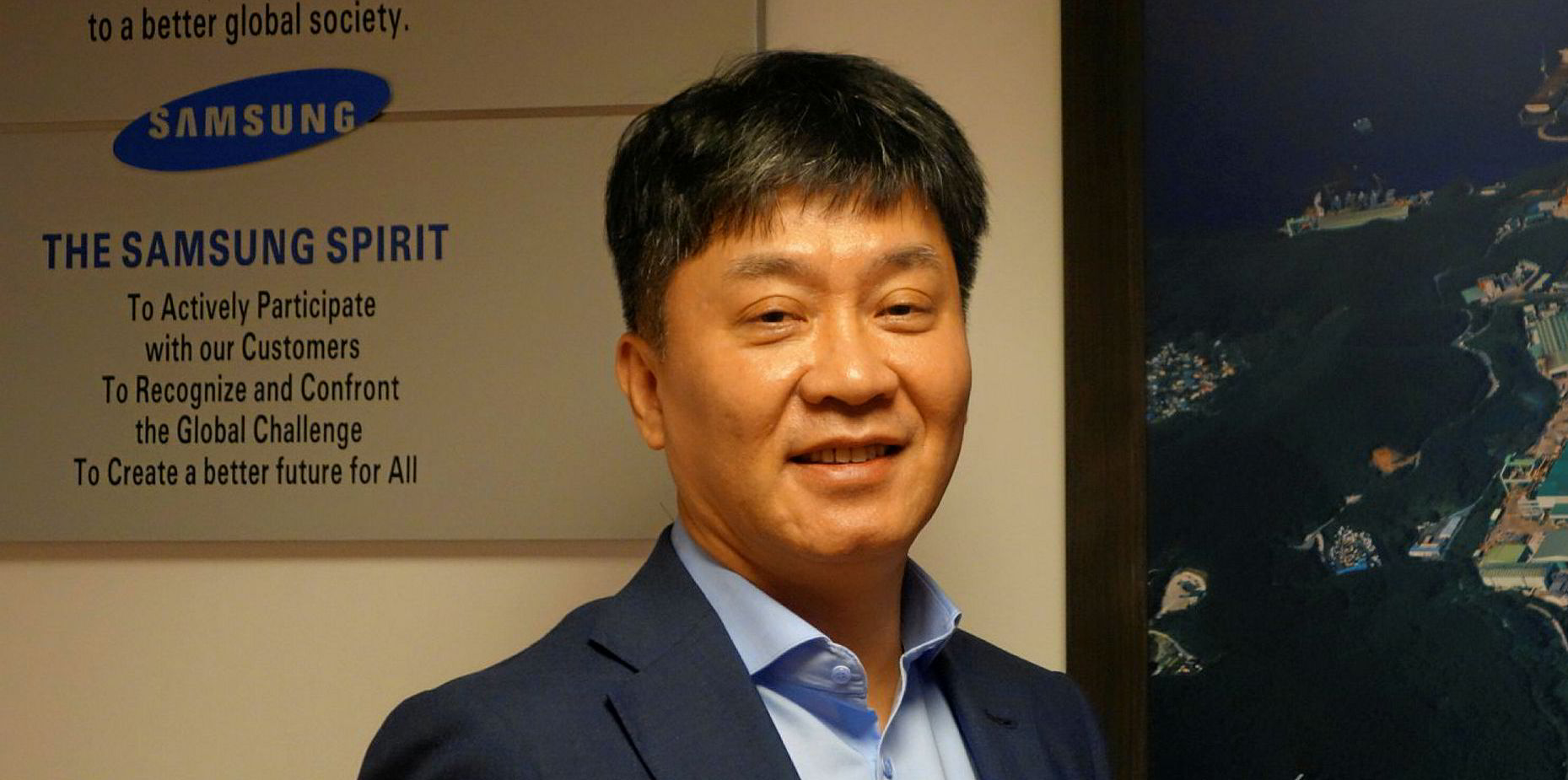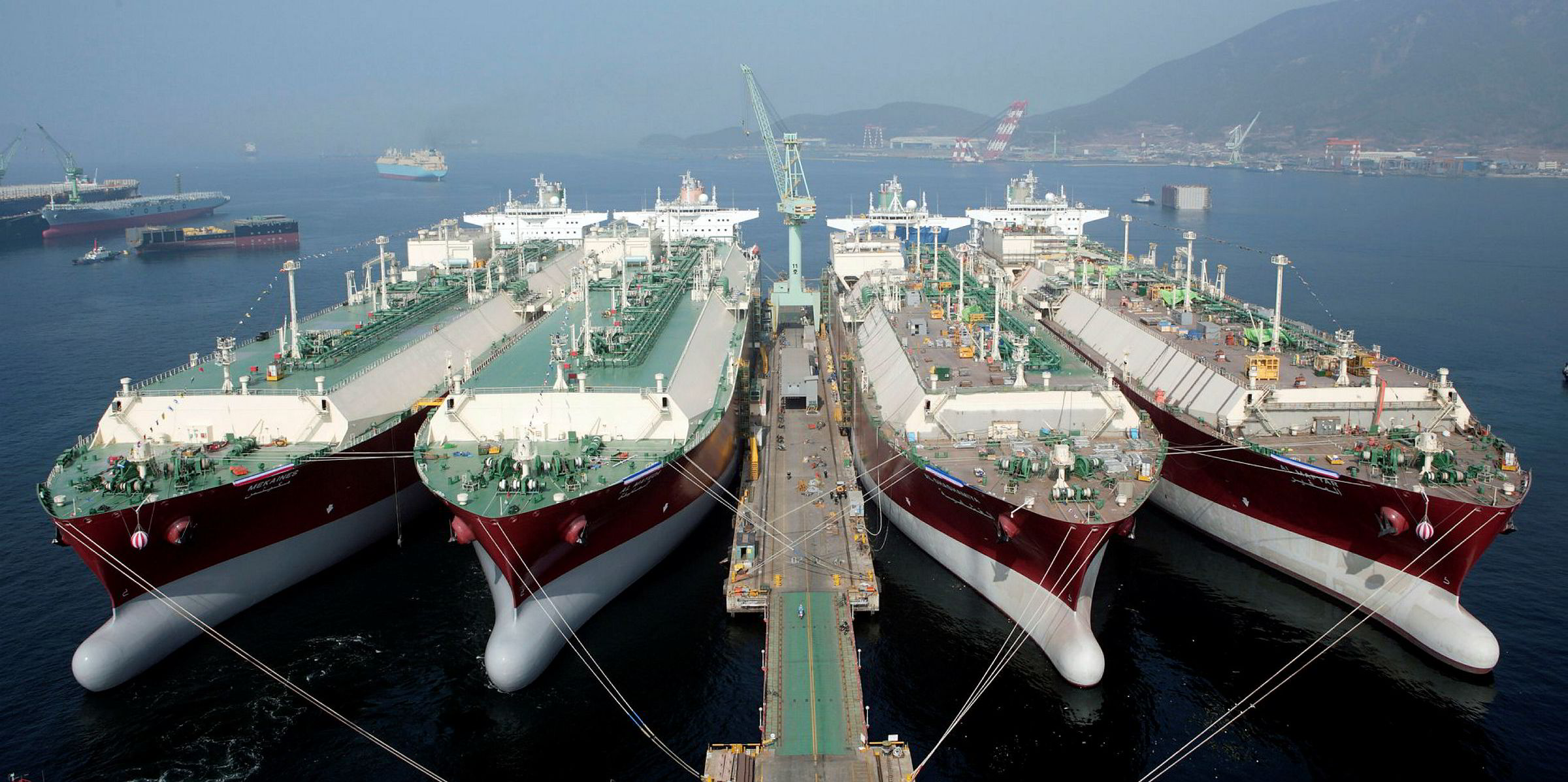Slowly emerging from the shipbuilding downturn, Samsung Heavy Industries wants to gain an upper hand over its rivals by focusing on ship technology and eco-friendly fuels.
While the shipbuilding capacity has experienced continued consolidation this decade in the face of overcapacity, competition among the remaining yards remains fierce with lacklustre demand in most shipping sectors.
“We need to get more competitiveness in terms of design, productivity and [vessel] quality,” Seongil Oh, SHI’s vice president of marketing and product planning, tells TradeWinds.
“We need to impose [it] on all the sectors.”
The South Korean shipbuilder is fighting for limited newbuilding demand with competitors at home and abroad in China and Japan, some of which are developing into industrial conglomerates with capacity in manufacturing marine equipment.
Therefore, one area of focus for SHI is adopting more advanced technologies. Oh says SHI is planning a joint study with an equipment maker on future navigation systems that can enhance vessel operations.
“We mainly focus on smart ships,” Oh says. “We will apply many intelligence systems onboard, like monitoring system and proper navigation systems.”
Moreover, SHI is developing the “half-crew” concept with class society DNV GL.
“We are targeting to half the number of crew by 2022,” Oh says. “Crewing is not easy.”
For the last three to four years, we suffered a lot from poor markets ... we need to make our business financially stabilise first. After that, we may consider some diversification
Seongil Oh, SHI’s vice president of marketing and product planning
“[This concept is] to avoid human errors and reduce the difficulty in crewing.”
Both ship technologies could point to higher capital expenditure (capex) for shipowners. However, Oh reckons they will be able to cut operating expenses (opex) with the gains in efficiency.
“With the savings in opex, we can overcome the increases in capex,” he says.
Eco challenges
With uncertainty over vessel requirements amid tightening environmental regulations, many industry players have been hesitant in placing newbuilding orders in recent quarters.
The IMO has required vessels to consume lower-sulphur marine fuels or LNG from next January unless they are fitted with scrubbers. Emission targets have also been set for 2030 and 2050, but implementation measures are yet to be decided.
While the 2030 target can be met by optimising vessel operations and existing fuels, the industry will need to have low-emission, or even zero-emission, fuels to reach the 2050 goal, according to many industry officials.
One of the short-term measures under discussion at the IMO is to have more slow-steaming, while phasing out older vessels. If this is adopted, shipyards may need to reduce the optimal speed for newbuilding tonnage and may lead to more replacement orders emerging.
“As a shipbuilder, we will be ready [with] that kind of requirement for technical developments,” Oh says. “We will make [ships with] better design, less emissions and more fuel savings.
“Older vessels will need to be scrapped, and we will replace them with the new ones.”
To reduce ship emissions in the long run, SHI has been working with engine makers to develop alternative fuels such as methanol, ammonia, hydrogen and LPG.
Oh suggests LNG could be the best option due to its availability and competitive pricing.
“It has emissions of CO2 but no SOx and NOx,” Oh says. “If we get some technology in marine engines, such as carbon collectors, maybe LNG can stay long in the market.”
Focus on shipbuilding
As shipowners may need to retrofit their existing vessels to meet future regulatory requirements, some industry officials have expected more retrofitting business for yards.
However, having recorded net losses totalling $2.17bn from 2015 to 2018, SHI will focus on enhancing the competitiveness of its core shipbuilding operations.
“For the last three to four years, we suffered a lot from poor markets ... we need to make our business financially stabilise first,” Oh says. “After that, we may consider some diversification.
“Retrofitting requires big capacity. Also, our man-hour costs are higher than those of Singaporean and Chinese yards.”
“[But] we can participate in the engineering side ... We can provide engineers and take the vessels to certain countries [where retrofitting is done].”






